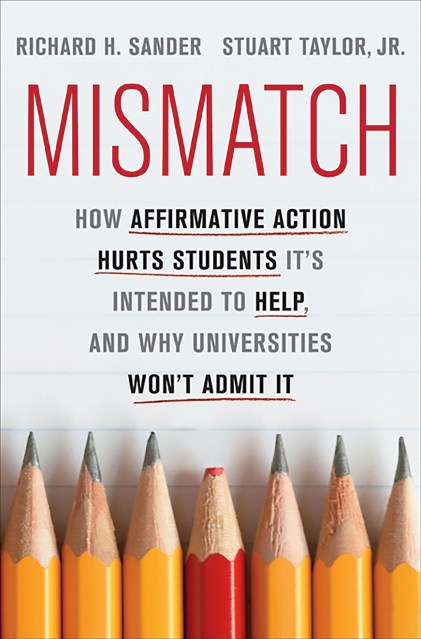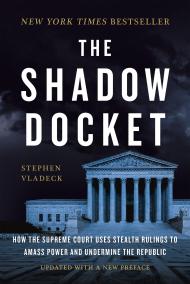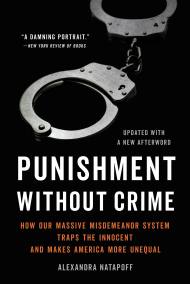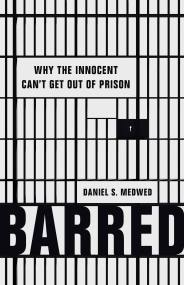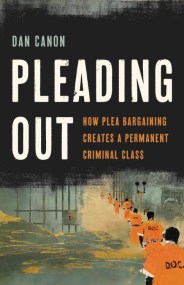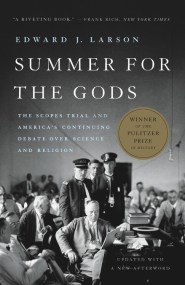By clicking “Accept,” you agree to the use of cookies and similar technologies on your device as set forth in our Cookie Policy and our Privacy Policy. Please note that certain cookies are essential for this website to function properly and do not require user consent to be deployed.
Mismatch
How Affirmative Action Hurts Students It's Intended to Help, and Why Universities Won't Admit It
Contributors
By Stuart Taylor Jr.
Formats and Prices
Price
$40.00Price
$50.00 CADFormat
Format:
- Hardcover $40.00 $50.00 CAD
- ebook $19.99 $25.99 CAD
This item is a preorder. Your payment method will be charged immediately, and the product is expected to ship on or around October 9, 2012. This date is subject to change due to shipping delays beyond our control.
Also available from:
Sander and Taylor have long admired affirmative action’s original goals, but after many years of studying racial preferences, they have reached a controversial but undeniable conclusion: that preferences hurt underrepresented minorities far more than they help them. At the heart of affirmative action’s failure is a simple phenomenon called mismatch. Using dramatic new data and numerous interviews with affected former students and university officials of color, the authors show how racial preferences often put students in competition with far better-prepared classmates, dooming many to fall so far behind that they can never catch up. Mismatch largely explains why, even though black applicants are more likely to enter college than whites with similar backgrounds, they are far less likely to finish; why there are so few black and Hispanic professionals with science and engineering degrees and doctorates; why black law graduates fail bar exams at four times the rate of whites; and why universities accept relatively affluent minorities over working class and poor people of all races.
Sander and Taylor believe it is possible to achieve the goal of racial equality in higher education, but they argue that alternative policies — such as full public disclosure of all preferential admission policies, a focused commitment to improving socioeconomic diversity on campuses, outreach to minority communities, and a renewed focus on K-12 schooling — will go farther in achieving that goal than preferences, while also allowing applicants to make informed decisions. Bold, controversial, and deeply researched, Mismatch calls for a renewed examination of this most divisive of social programs — and for reforms that will help realize the ultimate goal of racial equality.
Genre:
-
“An influential book.”
—Michael Kinsley, Bloomberg View
“[A] wealth of information.... Dr. Sander and Mr. Taylor present an excellent explanation of what is currently meant by affirmative action and demonstrate how it has been abused.”
—New York Journal of Books
“[A] remarkable new book. [Sander and Taylor] have shifted the focus of the entire debate. Bypassing the standard arguments about core principles, their extensive research focuses on the actual effects of racial preferences on the students they were intended to benefit. Drawing upon data never before available to independent-minded scholars, they find, to their dismay, that such policies actually do more harm than good to black and Hispanic students. From now on, it will be impossible to have a serious debate on this subject without extensive reference to the evidence provided in this volume.”
—National Review -
“In the real world, there is little doubt that racial preferences are a failure. In their judicious book Mismatch, Richard Sander and Stuart Taylor Jr. catalog the twisted effect of preferences on schools beholden to them.”
—Rich Lowry, National Review Online
“[Stuart Taylor's] book is wonderful.... [It's] the most thoughtful account of the possible policy disadvantages of affirmative action in putting students who are mismatched...at universities where they're not prepared.”
—Jeffrey Rosen, on NPR's Diane Rehm Show
“In their outstanding book, Mismatch, Richard Sander and Stuart Taylor Jr. document the paradoxical results of giving large preferences to racial and other minorities. Sander and Taylor argue persuasively that the trouble with preferences is not the injustice done to people like Abigail Fisher, who was denied admission to the University of Texas while less qualified black and Hispanic applicants were accepted — though that is unfair — but also the harm it does to those to whom such preferences are extended.”
—Mona Charen, Creators Syndicate -
“The devastating new book Mismatch…has so much overwhelming evidence on the harm done to students who are black, Hispanic, or from other ‘under-represented' minorities, that it will be hard for anyone with pretensions of honesty to be able to deny that painful fact.... Sander and Taylor have written an outstanding book that deserves to be read and pondered in many places for many years. They have performed a major service for all those who have an open mind on affirmative action.”
—Thomas Sowell, Claremont Review of Books
“[An] eye-opening new book.... The argument Sander and Taylor make is unpopular among academic administrators, and, they illustrate, it has been systematically suppressed. But the evidence that they present makes obvious that the solution to educational inequity is not to be found in continuing to mask it with racial admissions preferences that harm students.”
—Science Careers
“Anyone who wants an honest look at the hard facts about racial preferences in admissions to colleges and universities will find it — perhaps for the first time — in a book titled Mismatch by Richard Sander and Stuart Taylor, Jr.... The careful analysis of documented facts makes Mismatch a rare and valuable book for people who want to think.”
—Thomas Sowell, Creators Syndicate -
“The evidence on [the wrongs perpetrated by affirmative action programs] is hotly disputed, but Richard Sander and Stuart Taylor Jr. make a compelling case in their book Mismatch.”
—David Brooks, New York Times
“The best argument against affirmative action is presented in Mismatch, by Richard Sander and Stuart Taylor. The subtitle says it all: How Affirmative Action Hurts Students Its Intended to Help and Why Universities Won't Admit It.... If Sander and Taylor are right, affirmative action may be a policy that hurts Asians and helps no one. But this is an uncomfortable thing to say. For one thing, we don't know that they're right — there is a hot debate over their thesis. But even if they are right, the remedy is bound to be very divisive..... It's worth noting that it should be relatively easy to tell whether Sander and Taylor are right, except that it's very hard to get the data. And it's hard to get the data because institutions fight like hell to keep it from being released. It's no surprise that we can't all agree on a remedy for historical racism. But it should be easy to agree to study the problem.”
—Megan McArdle, The Daily Beast -
“The highly anticipated Sander-Taylor book, Mismatch: How Affirmative Action Hurts Students It's Intended to Help, and Why Universities Won't Admit It, was published Tuesday, on the eve of the oral argument in Fisher v. Texas. It is, in a word, magisterial. No matter what the Supremes decide, this work will be regarded as a major — perhaps the major — discussion of the use and abuse of race in American higher education, easily displacing Bowen and Bok's unduly influential The Shape of the River, which it respectfully but effectively eviscerates.... As someone who has attempted to follow racial issues closely, I can assure you that you will learn, as I did, a great deal that you didn't know and be impressed by the wealth of social science evidence ably and judiciously presented to support and extend the mismatch theory.... Mismatch, in short, is a major contribution to the debate over affirmative action, a model of vigorous but fair and balanced argument and analysis.”
—John S. Rosenberg, Minding the Campus -
“This book probably will make constitutional history. Written at the intersection of social science and law, its data conclusively demonstrate the damage that has been done to intended beneficiaries by courts' decisions that have made racial preferences in college admissions an exception to the Constitution's guarantee of equal protection of the laws.”
—George F. Will
“As a longtime defender of affirmative action, I used to think the so-called mismatch problem was an overhyped myth. But Sander and Taylor make a convincing case and, more important, good recommendations to keep affirmative action alive — without preferences.”
—Clarence Page, Chicago Tribune
“[Sander and Taylor] are intelligent critics who support the modest use of race in admissions but think very large preferences have harmful effects.... [T]his book is at its best when it skewers college and university officials — who feel morally superior for defending affirmative action — for in fact pursuing what Yale Law professor Stephen Carter has called ‘racial justice on the cheap.'”
—Richard Kahlenberg, The New Republic -
“This lucid, data-rich book is simply the best researched and most convincing analysis ever done of affirmative action in higher education, a work at once impeccably scholarly and entirely accessible to anyone interested in the social and legal ramifications of well-intentioned policies that, as the authors show, have a boomerang effect on the intended beneficiaries.”
—Judge Richard A. Posner
“As a high-profile defender of affirmative action, I used to think the so-called ‘mismatch' problem was a bit overblown. Richard Sander and Stuart Taylor have caused me to think again. How many bright and promising minority students, we must ask, have failed because they were steered—with the best intentions, of course — into elite schools for which they were less prepared academically than most of their classmates? What better ways can we devise to boost academic achievement and expand the pool of qualified students of all races? We don't do future generations of students any favors by trying to ignore this issue or pretend it doesn't exist. If common-sense moderates don't step up and engage this debate, we only allow extremists to take control of it.”
—Clarence Page, Pulitzer Prize-winning columnist for the Chicago Tribune -
“[A] powerful new book that explains the nefarious consequences of [undergraduate and graduate admissions programs] for the supposed beneficiaries of racial preferences. The dirty secret — not a dirty little secret, but a dirty huge secret — is how massive in size their racial preferences are.”
—Ed Whelan, National Review Online, Bench Memos
“The authors offer extensive data in support of their conclusions that the present system is not serving those students well.... This information will be argued over all the same, but the authors' evenhanded suggestion that what might be a better strategy is to raise educational attainment by investing more in elementary and secondary education for lower-income students — ‘targeting economic need before racial identity,' as they put it — seems unobjectionable on the face. The subject may be hard to talk about, but it must be, and this is a valuable contribution to opening that needed discussion.”
—Kirkus Reviews
“Mismatch is a story of good intentions gone terribly awry. Sander and Taylor document beyond disagreement how university admissions offices' racial quotas and preferences systematically put black and Hispanic students in schools where they are far less well-prepared than others.”
—Michael Barone, Washington Examiner -
“[W]hat Mr. Sander and Mr. Taylor have accomplished here is incredibly impressive. The authors have done an excellent job of pulling together the available research, and Mr. Sander in particular has been dogged in his pursuit of fresh numbers…].... Mr. Sander and Mr. Taylor, of course, have their share of critics, and Mismatch will not be the last word on this subject. But they have put the nation's universities in a put-up-or-shut-up situation: They can either admit that preferences do harm, or they can release the data that prove otherwise.”
—Washington Times
“Sander and Taylor have marshaled a formidable amount of evidence to substantiate the mismatch theory, and...the payoff is persuasiveness.... Mismatch is very much in the tradition of the muckraking that Lincoln Steffens did a century ago when he took on the corruption in American cities; indeed, the book could be titled ‘The Shame of the Colleges.'”
—Wall Street Journal
“[A] sober, reasoned, more-in-sorrow-than-in-anger critique of affirmative action.... One of the virtues of this book is that it is based on a rigorous, dispassionate examination of the facts. It is packed with easy-to-follow graphics and statistical analysis, as well as extensive case evidence based on interviews.”
—The American Spectator -
“Racial discrimination is unlawful and has been rightly repudiated by the American people. The corrupt silence concerning such discrimination in college and university admissions suggests that at some level these people know they are doing something for which they should be ashamed. Unfortunately they are doing their intended beneficiaries no favors. That's proved beyond demur by Sander and Taylor's Mismatch.”
—Michael Barone, Creators Syndicate
“[Mismatch: How Affirmative Action Hurts Students It's Intended to Help, and Why Universities Won't Admit It is] a fine book, and the evidence gathered under the first part of the subtitle is convincing.... I was even more intrigued by the second part — about the reluctance of the universities and respectable opinion in general to recognize the defects of the policy. It's a subject that cannot be discussed, least of all in the precincts of American institutions dedicated to fearless free inquiry.”
—Clive Crook, Bloomberg View
“Sander and Taylor attack affirmative action programs in a bold and comprehensive way.... General readers will learn much from this work, though it is recommended more for graduate students in public policy as well as students and faculty at law schools.”
—Choice
- On Sale
- Oct 9, 2012
- Page Count
- 368 pages
- Publisher
- Basic Books
- ISBN-13
- 9780465029969
Newsletter Signup
By clicking ‘Sign Up,’ I acknowledge that I have read and agree to Hachette Book Group’s Privacy Policy and Terms of Use
